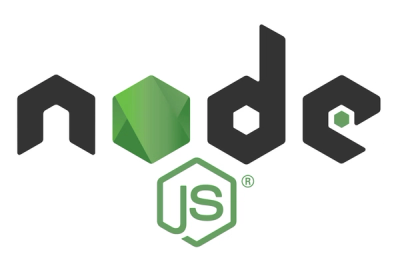
Security News
Django Joins curl in Pushing Back on AI Slop Security Reports
Django has updated its security policies to reject AI-generated vulnerability reports that include fabricated or unverifiable content.
@walltowall/gatsby-source-prismic-docs
Advanced tools
Gatsby source plugin for building documentation for sites using Prismic as a data source
Gatsby source plugin for Prismic slice documentation.
Gatsby source plugin for building documentation for sites using Prismic as a data source.
TODO
npm install --save @walltowall/gatsby-source-prismic-docs
// In your gatsby-config.js
plugins: [
/**
* Gatsby's data processing layer begins with "source" plugins. Here the site
* sources its data from your documentation files.
*/
{
resolve: '@walltowall/gatsby-source-prismic-docs',
options: {
/**
* Provide an array of SliceDocumentation objects.
*/
sliceDocumentations: [SliceDocumentation(/* ... */)],
/**
* Provide an array of CustomTypeDocumentation objects.
*/
customTypeDocumentations: [CustomTypeDocumentation(/* ... */)],
/**
* Provide an array of LayoutDocumentation objects.
*/
layoutDocumentations: [LayoutDocumentation(/* ... */)],
/**
* Provide an array of GuideGroup objects.
*/
guideGroups: [GuideGroup(/* ... */)],
},
},
]
Slices are documented using the SliceDocumentation struct.
The markdown helper can be used when lengthier content is needed, such as the
about field.
const {
SliceDocumentation,
SliceExample,
textField,
lorem,
markdown,
} = require('@walltowall/gatsby-source-prismic-docs')
module.exports = SliceDocumentation({
qualifiedName: 'PageBodyText',
about: markdown`
About the slice
`,
relatedSlices: ['PageBodyImages'],
examples: [
SliceExample({
name: 'Example name',
data: ({
heading = lorem('2w'),
paragraphs = [lorem('40w'), lorem('30w'), lorem('50w')],
}) => ({
primary: {
heading: textField(heading),
text: textField(paragraphs.map(x => `<p>${x}</p>`).join('')),
},
}),
}),
],
})
Slice examples are created using the SliceExample struct. These structs create
mock data from Prismic in the shape the Slice expects.
The data field should be a function that returns mock Prismic data for the
slice. The content of the examples can be configured using the function's first
argument like the example above. These overrides may be useful when creating
layout documentation.
The meta field should be a function that returns mock data for the meta
object used in mapDataToProps and mapDataToContext in
MapSlicesToComponents. Like the data field, the content of the example meta
object can be configured using the function's first argument. These overrides
may be useful when creating layout documentation.
Helpers are available to mock Prismic fields quickly.
textField: Creates a Structured Text field (i.e. Rich Text, Title).linkField: Creates a link field. Usually used with no arguments to create a
stub link.imageFieldFluid: Creates an Image field with
gatsby-source-prismic's Gatsby Image fluid builder.lorem: Returns placeholder "Lorem ipsum" text.Layouts are documented using the LayoutDocumentation struct.
The markdown helper can be used when lengthier content is needed, such as the
about field.
const {
LayoutDocumentation,
SliceExampleRef,
SliceExampleGroup,
markdown,
} = require('@walltowall/gatsby-source-prismic-docs')
module.exports = LayoutDocumentation({
customType: 'page',
name: 'Home',
description: 'Short description',
about: markdown`
About the layout.
`,
slicesMiddleware: (list = []) => [
{ __typename: 'PageBodyHeader' },
...list,
{ __typename: 'PageBodyFooter' },
],
exampleGroups: [
SliceExampleGroup({
name: 'First section of the layout',
description: markdown`
Description of the section.
`,
recommendedSlices: ['PageBodyText'],
examples: [
SliceExampleRef({
qualifiedName: 'PageBodyText',
exampleName: 'With heading',
args: {
heading: 'My cool page',
},
}),
],
}),
SliceExampleGroup({
name: 'Second section of the layout',
description: markdown`
Description of the section.
`,
recommendedSlices: ['PageBodyCallToAction'],
examples: [
SliceExampleRef({
qualifiedName: 'PageBodyCallToAction',
exampleName: 'With external link',
}),
],
}),
],
})
Slice examples are combined to create an example layout using the
SliceExampleGroup and SliceExampleRef structs.
The SliceExampleGroup struct groups one or more Slice examples and provides a
description of their purpose.
The SliceExampleRef struct references an example from a given Slice using the
Slice's qualified name and the example's full name. Arguments can be passed via
the args and metaArgs fields to customize the mock data for the example.
If the layout requires MapSlicesToComponents list middleware, such as adding
site-wide header and footer Slices, a middleware function can be provided to the
slicesMiddleware field.
Custom types are documented using the CustomTypeDocumentation struct.
The markdown helper can be used when lengthier content is needed, such as the
about field.
const {
CustomTypeDocumentation,
markdown,
} = require('@walltowall/gatsby-source-prismic-docs')
module.exports = CustomTypeDocumentation({
apiId: 'page',
description: 'Short description',
about: markdown`
About the custom type.
`,
tabDescriptions: {
main: 'Information about the page.',
body: 'Content for the page.',
},
sliceZoneDescriptions: {
main: 'Set metadata for the page.',
body: "Build the page's content using Slices.",
},
})
Custom types are documented using the CustomTypeDocumentation struct.
const { GuidesGroup } = require('@walltowall/gatsby-source-prismic-docs')
module.exports = GuidesGroup({
name: 'General',
files: [
path.join(__dirname, 'editing-content.md'),
path.join(__dirname, 'publishing.md'),
],
})
You can query nodes created from your documentation files using GraphQL like the following:
Note: Learn to use the GraphQL tool and Ctrl+Spacebar at http://localhost:8000/___graphql to discover the types and properties of your GraphQL model.
{
allPrismicDocsSlice {
nodes {
id
qualifiedName
}
}
}
All documentation schemas are pulled from your plugin options and created as
prismicDocs${nodeType} and allPrismicDocs${nodeType}, where ${nodeType} is
one of the following:
SliceSliceExampleSliceExampleGroupExampleDataLayoutCustomTypeGuidesGroupFor example, if you want to get documentation for all custom types, you will be able to query for them like the following:
{
allPrismicDocsCustomType {
nodes {
id
displayName
}
}
}
gatsby-node.js exampleconst path = require('path')
exports.createPages = async ({ graphql, actions }) => {
const { createPage } = actions
const sliceDocs = await graphql(`
{
allPrismicDocsSlice {
nodes {
id
schema {
name
}
}
}
}
`)
sliceDocs.data.allPrismicDocsSlice.nodes.forEach(node => {
createPage({
path: `/slices/${node.schema.name}`,
component: path.resolve(__dirname, 'src/templates/slice.js'),
context: {
id: node.id,
},
})
})
}
FAQs
Gatsby source plugin for building documentation for sites using Prismic as a data source
The npm package @walltowall/gatsby-source-prismic-docs receives a total of 2 weekly downloads. As such, @walltowall/gatsby-source-prismic-docs popularity was classified as not popular.
We found that @walltowall/gatsby-source-prismic-docs demonstrated a not healthy version release cadence and project activity because the last version was released a year ago. It has 4 open source maintainers collaborating on the project.
Did you know?

Socket for GitHub automatically highlights issues in each pull request and monitors the health of all your open source dependencies. Discover the contents of your packages and block harmful activity before you install or update your dependencies.

Security News
Django has updated its security policies to reject AI-generated vulnerability reports that include fabricated or unverifiable content.

Security News
ECMAScript 2025 introduces Iterator Helpers, Set methods, JSON modules, and more in its latest spec update approved by Ecma in June 2025.

Security News
A new Node.js homepage button linking to paid support for EOL versions has sparked a heated discussion among contributors and the wider community.